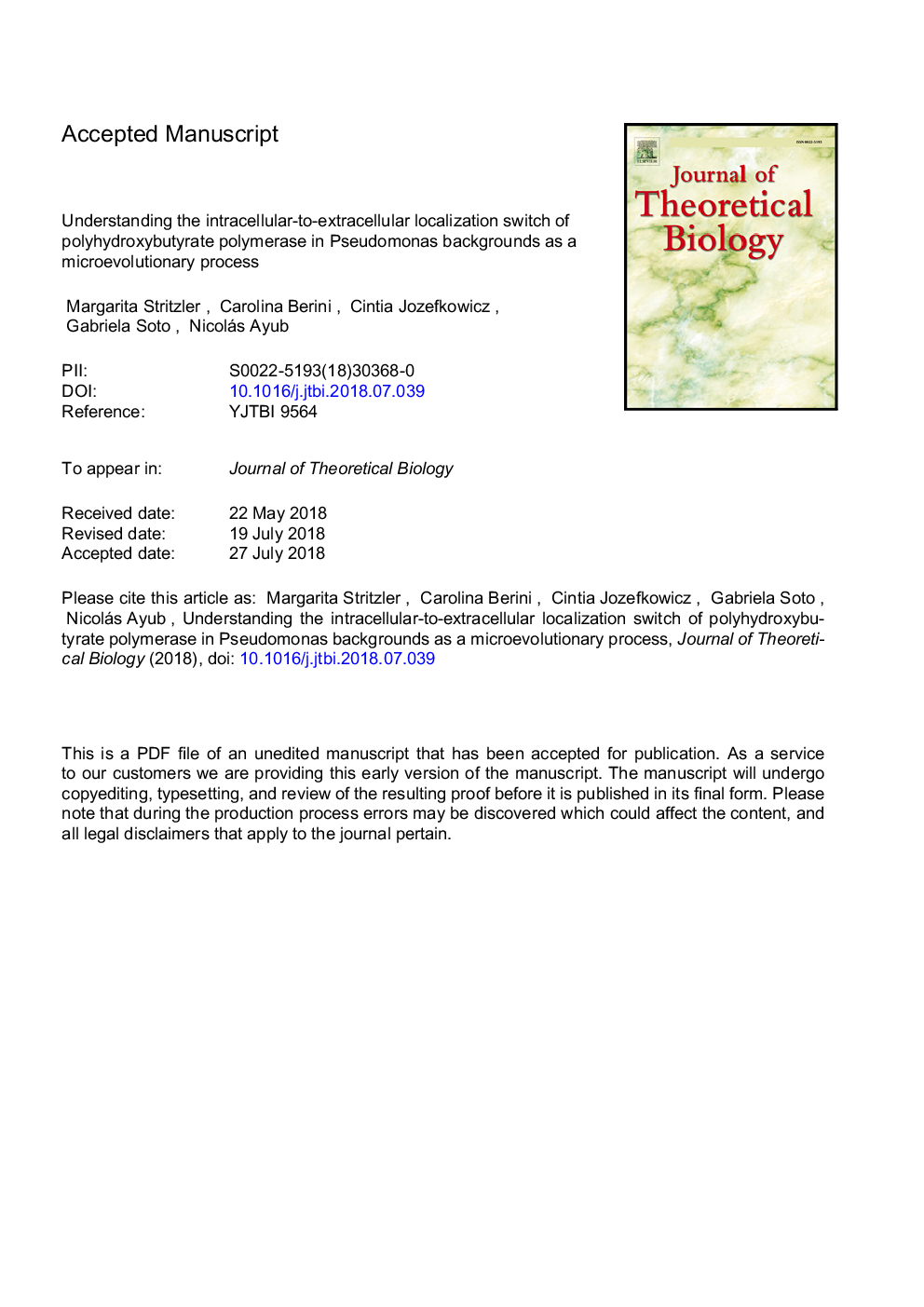| Article ID | Journal | Published Year | Pages | File Type |
|---|---|---|---|---|
| 8876429 | Journal of Theoretical Biology | 2018 | 13 Pages |
Abstract
After gene duplication, paralogous genes evolve independently, and consequently, the new proteins encoded by these duplicated genes are exposed to changes in their subcellular location. Although there are increasing evidence that phylogenetically related proteins play different functions in different subcellular compartments, the number of evolutionary steps required for the emergence of a novel protein with a novel subcellular localization remains unclear. Regarding this intriguing topic, here we examine in depth our previous reports describing both intracellular and extracellular polyhydroxybutyrate polymerases (PhaC) in the Pseudomonadales group. The recapitulation of the intracellular-to-extracellular localization switch of PhaC in these strains shows a gradual evolution from a simple cytosolic PhaC form to a complex extracellular PhaC form specifically secreted via the type 1 secretion system. This gradual evolution includes several adaptive and pre-adaptive changes at the genomic, genetic and enzymatic levels, which are intimately related to the lifestyle of organisms during the evolution of protein localization. We conclude that the protein localization switch can be an extremely complex process in nature.
Keywords
Related Topics
Life Sciences
Agricultural and Biological Sciences
Agricultural and Biological Sciences (General)
Authors
Margarita Stritzler, Carolina Berini, Cintia Jozefkowicz, Gabriela Soto, Nicolás Ayub,
